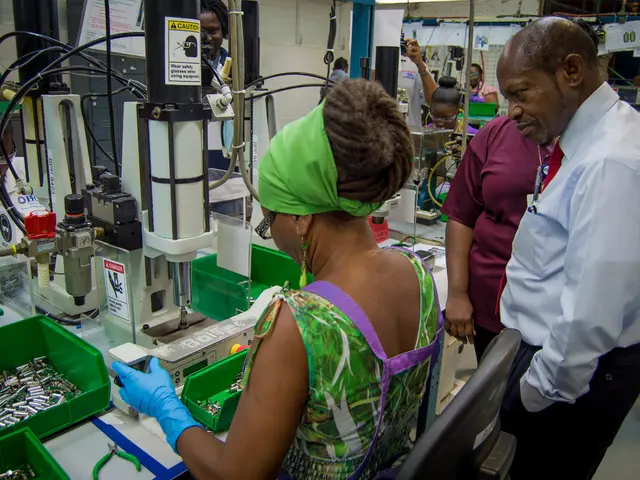Lifetime Factors: The Role of Time, Wealth, and Wellness in Guiding Decisions Through the Ages
Understanding Generational Shifts in Priorities: Time, Money, and Health
In today's ever-changing demographic landscape, the maxim "change is constant" holds particularly true. Generational groups follow predictable patterns in their evolving needs and spending habits. By comprehending these generational trends—where time, money, and health intersect—companies can develop a powerful strategy for market positioning.
The Time-Money Paradox Across Generations
The time-money trade-off has always been crucial: people either invest their time or pay someone else to complete tasks. However, this concept gains added depth when applied across the human lifespan. As individuals age, priorities naturally shift, impacting what they value most at different stages of life.
In youth, time abounds but income can be limited. Thus, the focus revolves around building wealth through professional advancement, savings accumulation, or educational investments. Businesses targeting such audiences should take note of their value-driven spending habits, emphasizing cost-effectiveness rather than convenience. Young adults are generally willing to invest their own time for potential savings.
Age, Time, and Prioritizing Convenience
As individuals reach their 30s and 40s, their priorities tend to shift. Careers become more established, income grows, and personal time becomes highly valuable. With responsibilities like marital and familial obligations, homeownership, and busy schedules, these individuals often prioritize purchases offering time savings. Brands offering convenient, time-saving solutions, such as meal delivery services or household cleaning services, can capture this demographic's attention effectively.
Quite a Change: Time and Money Reconcile with Age
Ultimately, many people in later life stages enjoy a more equal balance of time and money. Empty nests, slowing careers, and financial stability characterize this phase. Finally, leisure, travel, and hobbies—previously sidelined—become primary interests. Companies supplying experiences, premium products, and enriching activities score high appeal among this demographic, signaling their readiness to spend on sources of fulfillment and joy.
The Overlooked Factor: Health Concerns Kick In
However, there's another crucial dimension to this equation: health. Regardless of the amount of time or money one possesses, without optimal health, opportunities dwindle. Health concerns often surface around the age of 40 to 50, leading individuals to place greater emphasis on wellness and longevity.
In recent times, American health statistics have declined, placing an increased focus on wellness. This emerging focus highlights an imperative for businesses: consumers are willing to invest in health if it improves their ability to enjoy life and manage resources wisely.
Welcoming and Adapting to Generational Changes
Acknowledging these shifts is not just about recognizing a pattern; it's about actively responding to it. By tailoring business offerings to mirror where customers are in the time-money-health equation, businesses flexibly meet customers' needs at every life stage. As generations transition through prioritizing money, time, and health, adaptable companies thrive.
In summary, demographics drive economic changes through consistent shifts in priorities. Embrace these generational transformations, adapt your offerings to evolving needs, and you'll unlock the potential for lasting customer loyalty and success.
Relevant Insights from Enrichment Data:- Across generations, Gen Z prioritizes work-life balance, personal well-being, and meaningful work over traditional ambitions.- Financial stability and emergency savings rank high for Gen Z and Millennials, who prefer immediate quality of life over long-term wealth accumulation strategies.- Financial stress affects mental and physical health among younger and middle-aged adults, emphasizing the interconnectedness of financial, mental, and physical well-being.- Businesses can meet evolving customer needs by offering flexible work arrangements, financial products and services, integrating wellness into offerings, providing mentorship and development opportunities, and educating on diversified income sources.
- As individuals reach their 30s and 40s, they prioritize purchases offering time savings, such as meal delivery services or household cleaning services, demonstrating a preference for convenience in their workplace-wellness and health-and-wellness routines.
- With an increased focus on wellness, businesses offering fitness-and-exercise programs, health-monitoring devices, or personal-finance solutions that improve an individual's ability to manage resources wisely can appeal to consumers who prioritize health as they age.
- In response to generational shifts, companies can adapt their offerings to meet needs at various life stages by providing flexible work arrangements, diversified income sources, financial products and services, and integrating wellness into their products and services, promoting customer loyalty and success.
- Acknowledging that Gen Z values work-life balance, personal well-being, and meaningful work over traditional ambitions, companies should tailor their workplace culture, offer wellness-focused benefits, and emphasize professional development opportunities to attract and retain younger generations.








